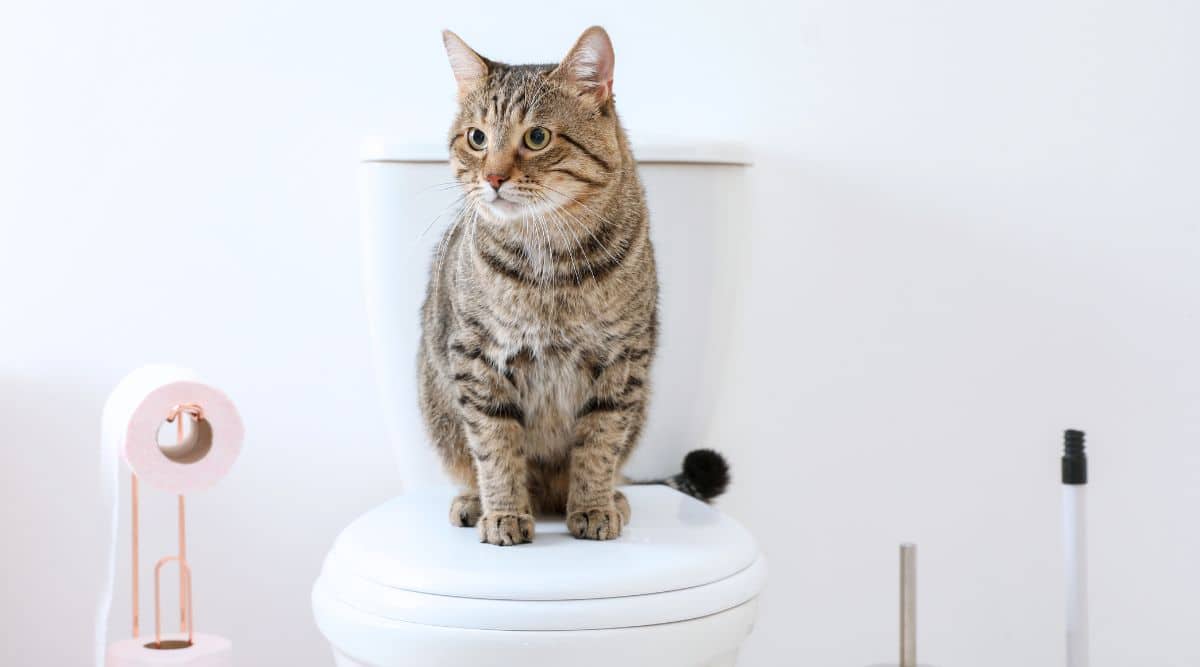Why Flushing Cat Poop Down Your Toilet Can Cause Problems - Recommendations for Proper Handling
Why Flushing Cat Poop Down Your Toilet Can Cause Problems - Recommendations for Proper Handling
Blog Article
Just how do you feel about How to Dispose of Cat Poop and Litter Without Plastic Bags?

Intro
As cat owners, it's vital to bear in mind just how we take care of our feline close friends' waste. While it may seem practical to flush cat poop down the bathroom, this practice can have destructive repercussions for both the setting and human health and wellness.
Environmental Impact
Flushing pet cat poop presents unsafe microorganisms and parasites into the water supply, posturing a considerable danger to water ecological communities. These impurities can negatively impact marine life and compromise water quality.
Health Risks
Along with environmental problems, flushing pet cat waste can likewise posture health and wellness dangers to people. Cat feces may contain Toxoplasma gondii, a parasite that can cause toxoplasmosis-- a possibly serious illness, especially for expecting females and individuals with damaged immune systems.
Alternatives to Flushing
Fortunately, there are more secure and more liable means to dispose of pet cat poop. Think about the following options:
1. Scoop and Dispose in Trash
The most usual technique of throwing away feline poop is to scoop it into a biodegradable bag and toss it in the trash. Make sure to make use of a dedicated trash scoop and deal with the waste immediately.
2. Usage Biodegradable Litter
Select naturally degradable feline litter made from products such as corn or wheat. These clutters are eco-friendly and can be safely taken care of in the garbage.
3. Hide in the Yard
If you have a yard, consider hiding pet cat waste in a marked area far from vegetable yards and water sources. Make certain to dig deep sufficient to stop contamination of groundwater.
4. Mount a Pet Waste Disposal System
Purchase a pet dog waste disposal system specifically created for pet cat waste. These systems make use of enzymes to break down the waste, decreasing odor and environmental impact.
Final thought
Accountable animal possession prolongs past giving food and shelter-- it likewise includes proper waste monitoring. By avoiding flushing pet cat poop down the bathroom and selecting alternative disposal approaches, we can decrease our ecological footprint and shield human health.
CAN I FLUSH MY CAT'S POOP DOWN THE TOILET?
Always avoid flushing cat poop down the drain because not only could it potentially contain harmful parasites called toxoplasmosis, the litter could sit in your line and lead to a clog.
Plenty of waste gets flushed down your toilet every day, so what harm could a little cat poop and cat litter do? The answer is a lot, which is why you never want to send it down your drains.
Can I Flush My Cat's Poop Down The Toilet?One of the biggest problems with flushing your cat’s presents is the harmful parasites in your feline’s stool called toxoplasmosis. Extremely dangerous for humans, especially pregnant women and people who are immunocompromised, these parasites can cause a multitude of problems for unborn babies and even cause death or miscarriage if the infection happens early. That’s why you should always avoid touching cat poop. Also, water systems are not equipped to handle toxoplasmosis and are unable to destroy the parasite before it’s sent back into the environment, potentially jeopardizing the health of local area wildlife, specifically marine life.
Flushing cat poop could also lead to a future drain clog. Try as you may to eliminate any litter from it, there will always still be some stuck on there – and even if it says flushable on the label, it’s not! Cat litter is made up of bentonite clay, which has the tendency to harden when wet, creating a thick, almost cement-like quality. Cat litter that ends up down the drain can expand from the moisture in the pipes and then harden, blocking any wastewater. If you have a septic tank or a cesspool, it cannot handle cat litter either, no matter what kind. If it solidifies in the tank, in any of the system’s major parts like the inlet baffle, it’ll create some expensive problems.
The best way to dispose of cat poop safely is to scoop it into a bag and throw it into the trash – and ways of dealing with the smell include adding baking soda and replacing the box more.
Now that we’ve explained the potential harm that flushing cat poop can cause to you and your drains, you might be wondering the best way of dealing with it. Unfortunately, it’s the old-fashioned way of scooping it into a bag and then placing it into a trash can. They also make pet-proof trash cans that lock in the smell, so that you don’t have to always immediately take it out. If you’re tired of smelling the litter box after even just one use from your feline, there’s things you can do to help combat that smell. Adding baking soda to the litter will reduce smells, but just don’t add too much or your cat will no longer want to use the box. You could also replace the box more frequently, at least once a year, as those smells can just seep inside the scratch marks. Lastly, try changing to a new litter formula – some are better with smells than others.

We had been made aware of that article about Don’t flush cat feces down the toilet from an acquaintance on a different web address. Sharing is good. Helping people is fun. We love reading our article about How to Dispose of Cat Poop and Litter Without Plastic Bags.
Book Your Installation Report this page